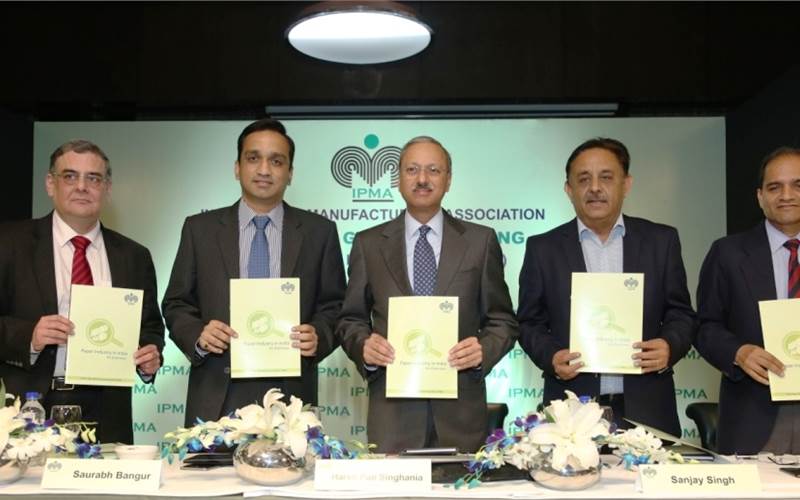Fastest growing Indian paper market facing import threats
At seven percent, paper consumption in India is growing at a fast pace. At the same time, cheap imports are increasingly meeting the new demand for paper and paperboard in the country, thus discouraging new investments from domestic manufacturers.
16 Jan 2017 | By Rahul Kumar
“The kind of growth that paper consumption is witnessing in India is not visible in any other large country. At 7%, India will easily be the fastest growing paper market in the world. However, Make in India in paper is seriously threatened in view of comparatively higher cost of raw material and surging cheaper imports, which have been growing at a pace faster than the growth in domestic production,” said Harsh Pati Singhania, vice-chairman and managing director, JK Paper, during at the 17th AGM of Indian Paper Manufacturers Association (IPMA).
The event was organised in New Delhi on 12 January.
Currently, paper consumption in India is approximately 15 million tonnes per annum (TPA). By 2024-25, under the baseline scenario, domestic consumption is projected to rise to 23.5 million TPA and production to 22.0 million TPA. About 1 million TPA of integrated pulp, paper and paperboard capacity is required to get created in India on an annual basis over the current capacity to meet the growing demand.
According to Sanjay Singh, president, IPMA, such investments would create a multiplier effect on the economy through gross capital formation of Rs 8,500 crore every year, direct employment to 15,000 people every year and further giving additional livelihoods of 72 million man days per year (for people involved in agro/ farm forestry).
“If the investments are not made, the growing demand will be met through imports, which will result in a substantial foreign exchange outflow and the opportunity to create significantly more jobs in the rural areas will be lost,” Singh added.
Imports of paper and paperboard, excluding newsprint, into India have been steadily increasing. In the last five years, imports have risen at a CAGR of 15.5% in value terms (from Rs 3,411 crore in 2010-11 to Rs 7,014 crore in 2015-16), and 15.8% in volume terms (from 0.54 million tonne in 2010-11 to 1.11 million tonne in 2015-16). Imports are growing at a very high rate as compared to the increase in domestic production rate.
Under the India-ASEAN FTA, import duties on almost all tariff lines under paper and paperboard have been progressively reduced, and from a base MFN rate of 10%, the basic customs duty has come down to zero with effect from 1 January 2014. Imports of paper and paperboard, excluding newsprint, into India from ASEAN in the last five years have grown at a CAGR of 37.5% in value terms and 38.5% in volume terms.
Imports are surging since cost of production is much higher in India. India is a wood fibre deficient country. Availability of wood domestically at 9 million TPA is inadequate compared to demand, which is currently about 11 million TPA and is projected to rise to 15 million TPA by 2024-25.
Consequently, the cost of wood has gone up exponentially over the last few years. Growing cost of raw material coupled with significant cost increase of fuels has resulted in a substantial increase in the cost of domestic manufacture of paper and paperboard, impacting competitiveness of the domestic paper industry.
At the 17th AGM of IPMA, Saurabh Bangur, vice-chairman, The West Coast Paper Mills, took over as new President of IPMA. AS Mehta, president, JK Paper, is the new vice-president of the association.
The IPMA Awards were also presented during the event.
IPMA Paper Mill of the Year Award 2015-16 was presented to Tamil Nadu Newsprint and Papers. Trident (Paper Division) was the recipient of IPMA Energy Conservation Award 2015-16. IPMA Environment Award 2015-16 was conferred upon Seshasayee Paper and Boards as well as The West Coast Paper Mills.














 See All
See All